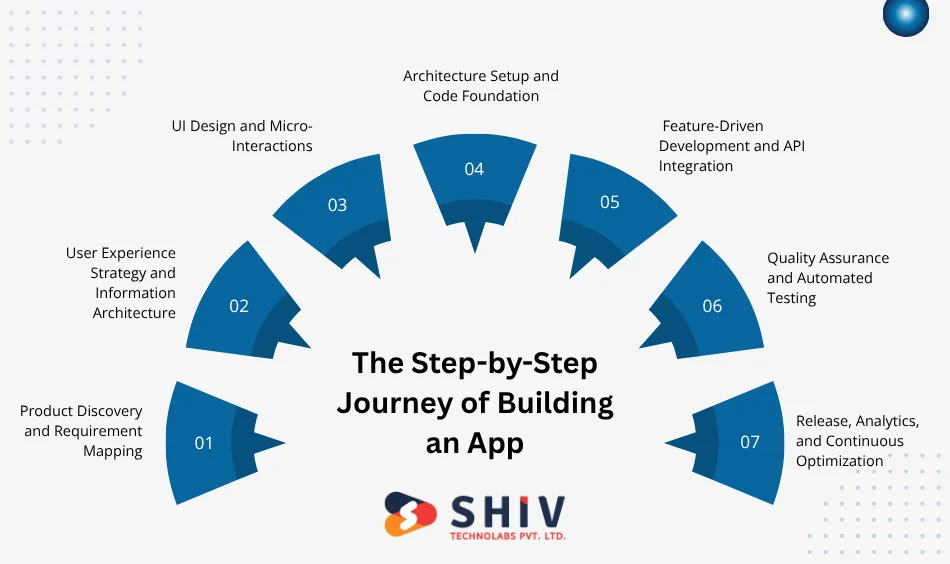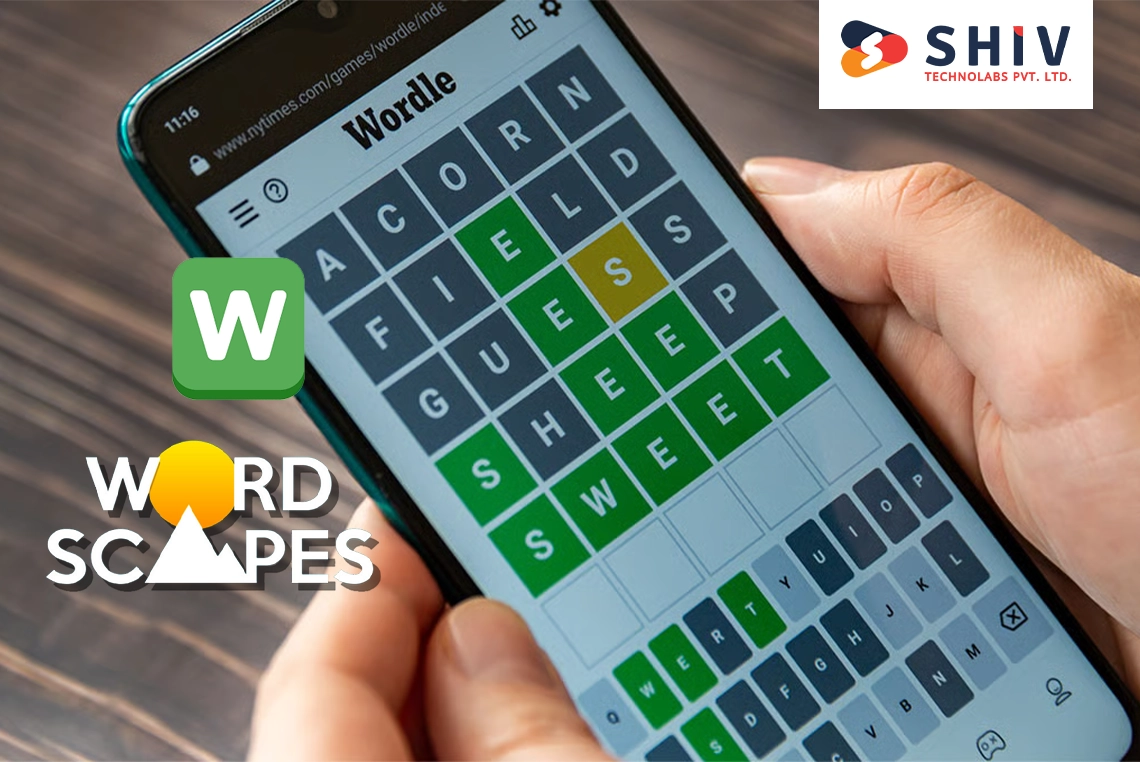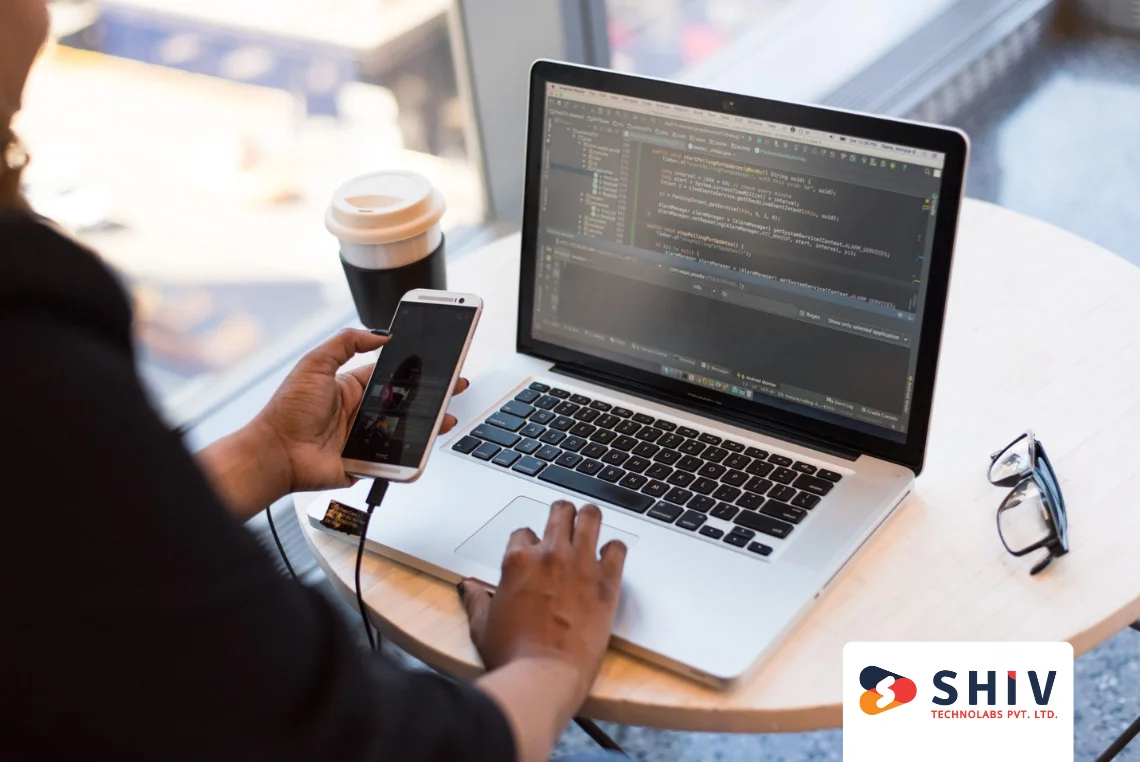Table of Contents
Mobile apps have become the center of how people interact, shop, learn, and connect. In 2025, users spend over 4.6 hours daily on mobile applications — from banking and fitness tracking to virtual meetings.
Businesses that once relied only on websites are shifting towards digital transformation solutions to reach users faster and build brand loyalty.
For startups and enterprises alike, a well-built app is no longer a luxury; it’s a primary customer touchpoint. The process behind that success isn’t just about coding.
It’s about following a structured path — understanding user needs, crafting a design that feels natural, writing efficient code, testing across devices, and maintaining it long after launch.
This guide walks through the entire mobile app development process step by step — from idea validation to post-launch analytics.
Whether you’re a founder planning your first app or a business leader refining your digital strategy, you’ll learn how modern apps are designed, developed, tested, and released successfully.
Breaking Down How Modern Mobile Apps Are Built
Behind every app that feels smooth and intuitive lies a process built on precision and teamwork. Developers, designers, and strategists work together to turn a rough idea into a reliable digital product.
While the details differ across projects, every successful app follows a similar flow — one that connects creative thinking with technical execution.
It starts with defining what the app should achieve. Whether it’s meant to simplify bookings, boost sales, or deliver entertainment, clear goals help shape every feature and function. From there, teams decide on the right tools, frameworks, and platforms — choices that affect speed, design flexibility, and long-term maintenance.
Unlike earlier years, app development is faster and more data-aware. AI-assisted coding, automated testing, and predictive UX tools help reduce development cycles and improve product quality.
The process is no longer linear; it’s iterative. Teams release early versions, gather feedback, and refine features continuously to match real user behavior.
This structured yet flexible flow is what keeps modern apps competitive — and it’s what you’ll see in detail in the next section: the key stages of the mobile app development lifecycle.
The Step-by-Step Journey of Building an App

Building an app isn’t a one-shot process — it’s a sequence of well-defined stages that connect business logic, design clarity, and technical structure. Here’s how modern mobile apps take shape in 2025, from the first idea to post-launch updates.
1. Product Discovery and Requirement Mapping
Every app starts with a question — what problem are we solving?
This phase identifies the target audience, defines goals, and validates whether the idea fits real-world demand. Teams conduct research sessions, study competitors, and outline measurable objectives.
In this stage:
- Define primary user needs and pain points.
- Finalize must-have features for the first release (MVP).
- Estimate project scope, cost, and expected ROI.
2. User Experience Strategy and Information Architecture
Once the concept is clear, designers begin to shape the experience. This stage is where function meets emotion — crafting how users will move through the app. Wireframes, flow diagrams, and prototypes bring logic to design ideas.
In this stage:
- Build personas representing different user types.
- Create user journey maps to visualize flow.
- Define screen hierarchy and navigation paths.
3. UI Design and Micro-Interactions
This phase transforms structure into visuals. Every icon, color, and animation is planned to help users take action effortlessly. Modern design systems also focus on accessibility, dark mode adaptability, and multi-device layouts.
In this stage:
- Design responsive interfaces using tools like Figma or Framer.
- Add motion-based feedback, such as button ripples or success ticks.
- Test multiple prototypes to measure usability.
4. Architecture Setup and Code Foundation
Developers create the foundation that supports the app’s logic, performance, and scalability. This is where technology choices — languages, frameworks, and architecture patterns — define the app’s strength.
In this stage:
- Choose architecture (MVVM, Redux, or Clean).
- Set up secure authentication and server connections.
- Build CI/CD pipelines for automated builds and testing.
5. Feature-Driven Development and API Integration
With structure in place, development turns ideas into live features. Teams code core functions like login, payment, push notifications, and data sync. Integration with APIs, cloud storage, and AI modules adds intelligence and automation.
In this stage:
- Connect frontend and backend through APIs.
- Integrate AI chat, geolocation, or recommendation engines.
- Build modules in sprints following Agile methodology.
6. Quality Assurance and Automated Testing
Before an app reaches users, it undergoes intense testing to catch errors and performance issues. Automated scripts and manual tests run on multiple devices and network conditions to ensure stability.
In this stage:
- Test speed, responsiveness, and battery usage.
- Run UI/UX validation on real devices.
- Simulate peak user loads and network drops.
7. Release, Analytics, and Continuous Optimization
After all tests are cleared, the app is released on the App Store or Play Store. But launch day is only the beginning. Developers track performance through analytics and roll out updates based on real usage data.
In this stage:
- Submit to app stores and manage release notes.
- Monitor crashes and user feedback using analytics tools.
- Plan new versions with feature improvements.
How Long Does It Take to Build and Launch a Mobile App?
Every app follows a similar flow, but no two timelines are the same. Development duration depends on app complexity, features, integrations, and testing depth. For example, a simple to-do list app can be ready in weeks, while a fintech or delivery platform can stretch over several months.
Project managers often divide the timeline into stages — planning, design, development, testing, and deployment — each with its own deliverables. The total duration also shifts based on the chosen technology stack and the number of supported platforms (Android, iOS, or both).
Below is a clear breakdown showing average timeframes for different app types.
| App Type | Approx. Duration | Core Features | Best Fit For |
|---|---|---|---|
| Basic Utility App | 8–10 weeks | Simple UI, login, notifications | Internal tools, single-function apps |
| E-commerce App | 16–20 weeks | Catalog, payments, cart, analytics | Retailers, D2C brands |
| On-Demand Delivery App | 20–26 weeks | Real-time tracking, chat, ratings | Food, taxi, and courier startups |
| Social Media App | 24–30 weeks | Feed, stories, chat, and content moderation | Communities, creators |
| Enterprise App | 28–36 weeks | Role-based dashboards, data sync, reports | Enterprises, B2B solutions |
# What Affects the Development Timeline
- Feature volume – the more modules you add, the longer coding and testing take.
- Design detail – advanced UI animations and motion effects increase effort.
- Third-party integrations – payment gateways, APIs, and AI tools require extra testing.
- App platform count – Android + iOS doubles design and testing cycles.
- Iteration cycles – feedback-based improvements after beta release extend timelines but raise app quality.
In most cases, the ideal development window for a full-featured, production-ready app sits between 3 to 8 months. Adding predictive analytics, AI chat, or IoT integration can increase it slightly — but the payoff is stronger engagement and long-term retention.
Cost Breakdown Building a Mobile App
Estimating the cost of developing a mobile app depends on far more than just design or coding.
The total investment comes from several layers — project planning, design complexity, feature count, backend structure, integrations, testing, and long-term maintenance.
App development pricing also varies by region and team composition. For example, a project in the United States can cost three to four times more than the same app built in India with an equally skilled team.
As AI and automation tools become mainstream, timelines may shrink, but quality assurance and post-launch management still add to the total budget.
Below is a cost overview to help visualize realistic spending based on app type and purpose.
| App Type | Estimated Cost (USD) | Purpose |
|---|---|---|
| Basic Informational App | $5,000 – $12,000 | Showcase content, company info, or product catalog |
| eCommerce App | $12,000 – $25,000 | Product listings, cart, checkout, analytics, and user profiles |
| Social Media App | $25,000 – $50,000 | Feeds, posts, messaging, notifications, and media upload |
| On-Demand Service App | $20,000 – $45,000 | Real-time tracking, chat, payments, and review system |
| Enterprise App | $30,000 – $80,000+ | Role-based dashboards, analytics, CRM, and ERP integration |
1. Additional Cost Factors to Consider
- Platform selection: iOS, Android, or both directly affects design and QA cost.
- App design quality: custom illustrations or animations add 15–25% extra.
- Backend complexity: apps using AI, IoT, or multi-user data management cost more.
- Ongoing maintenance: typically 10–20% of total development cost per year.
- App store charges: small but recurring (Google Play and App Store fees).
2. Cost-Saving Practices
- Build an MVP first — focus on core features, gather feedback, and expand later.
- Choose a cross-platform framework (Flutter or React Native) to save time and cost.
- Outsource specific tasks like testing or UI to specialized teams.
Tech Stack Used in Modern Mobile Apps

Every app’s performance, scalability, and maintenance depend heavily on the technology stack it’s built on.
The right combination of frontend, backend, and database tools defines how fast the app loads, how secure it is, and how easily it can evolve.
Here’s what a typical tech stack looks like for high-performing mobile apps.
1. Frontend Technologies
The frontend determines what users see and interact with. Developers use frameworks and languages that deliver smooth animations, quick rendering, and native-like experiences across devices.
Popular choices in 2025:
- Flutter: Single codebase for Android, iOS, web, and desktop; strong UI performance.
- React Native: Ideal for startups wanting faster delivery with a cross-platform setup.
- SwiftUI: For iOS apps that demand native transitions and accessibility control.
- Kotlin Multiplatform: Reduces redundant code while retaining platform-specific UI quality.
- Jetpack Compose: Google’s modern toolkit for Android UI with faster development cycles.
2. Backend Frameworks
The backend is the engine that drives all data processing, authentication, and communication between app screens and the server.
Common backend technologies used by expert teams:
- Node.js: Lightweight, scalable, and great for real-time apps.
- Laravel: PHP-based framework ideal for structured APIs and admin panels.
- Django: Secure Python framework for data-heavy or AI-integrated applications.
- Firebase: Serverless backend by Google for quick MVPs and real-time updates.
- AWS Lambda: Enables event-driven functions and auto-scaling for global users.
3. Database and Storage Solutions
Data defines every app’s behavior — from login details to personalized feeds. Choosing the right database ensures quick access and stable synchronization across devices.
Preferred databases in 2025:
- PostgreSQL: Open-source, reliable, and handles complex data relationships.
- MongoDB: Flexible NoSQL database ideal for apps with dynamic data models.
- MySQL: Trusted choice for structured applications with large datasets.
- Firestore: Real-time data syncing, perfect for chat or tracking apps.
- Redis: Used for caching to improve performance in high-traffic apps.
4. DevOps and Supporting Tools
Efficient workflows help teams deliver updates quickly and maintain app reliability after launch.
Frequently used tools:
- GitHub / Bitbucket for version control and collaboration.
- Jenkins / Bitrise for continuous integration and deployment.
- Docker / Kubernetes for scalable container management.
- Firebase Crashlytics for real-time crash reporting.
- Jira for agile project management and sprint tracking.
Selecting the right stack depends on app type, scalability goals, and available budget. Startups often prefer cross-platform frameworks like Flutter, while enterprises opt for native builds to handle heavy data operations and integrations.
Common Mistakes to Avoid During Development
Even well-planned app projects can face hurdles if certain fundamentals are ignored. Many delays, bugs, and user drop-offs occur due to preventable mistakes during the development phase. Here are some of the most common ones to watch out for.
1. Skipping MVP Validation
Building every feature at once is one of the biggest reasons apps fail early.
Start with a Minimum Viable Product (MVP) to test user response before scaling up. It reduces financial risk and provides real-world feedback to refine future updates.
2. Poor UI/UX Consistency
A mismatched interface — inconsistent fonts, confusing icons, or scattered navigation — drives users away quickly.
Consistent layouts and visual hierarchy across screens create comfort and trust. Always test designs with real users before locking final prototypes.
3. Ignoring Performance Optimization
Apps that load slowly or drain battery lose retention fast.
Developers must focus on clean code, caching, and image compression to reduce lag. Use tools like Firebase Performance or Android Profiler to monitor efficiency.
4. Overlooking Security Early On
Many developers postpone encryption and authentication, which can expose sensitive data.
Security should be built from day one — including SSL, token-based login, and data encryption for user privacy.
5. Neglecting Cross-Device Testing
Testing only on one device or platform often causes UI breaks on others.
Run QA sessions across multiple screen sizes and operating systems to avoid poor display issues or inconsistent interactions.
6. No Post-Launch Planning
Releasing an app is only half the job.
Skipping post-launch updates or analytics tracking prevents growth. Monitor crashes, study behavior metrics, and release timely updates to maintain engagement.
Avoiding these mistakes early saves months of rework and helps keep the development budget under control.
Every successful app project balances creativity, testing, and data-driven decision-making — not just code quality.
Why Businesses Trust Shiv Technolabs for Mobile App Development?
Building a mobile app in USA is more than writing code — it’s about shaping digital experiences that align with real business goals. At Shiv Technolabs, we help startups and enterprises translate their ideas into reliable, high-performing mobile applications.
Our in-house experts handle every step — from concept validation to post-launch optimization — ensuring your app performs smoothly across devices and scales with your business growth. We combine design precision with technical expertise to deliver mobile solutions that feel fast, intuitive, and user-focused.
What we offer:
- Custom Android, iOS, and cross-platform app development
- MVP design and development for startups
- Integration with AI, IoT, and enterprise systems
- Dedicated QA, maintenance, and support teams
- Agile development model with transparent reporting
With years of experience and a proven delivery record, Shiv Technolabs has become a preferred mobile app development company for brands looking to build scalable digital products. Whether you’re planning a new idea or modernizing an existing app, our team is ready to make it happen.
Final Thoughts
Mobile app development has evolved into a structured yet flexible process — one that balances creativity, speed, and scalability. From the first sketch on a whiteboard to the final app release, every stage plays a crucial role in shaping user experience and business impact.
Whether you’re building a basic utility app or a data-driven enterprise solution, success lies in following a defined process — backed by skilled developers, thorough testing, and continuous improvement. A well-planned mobile app not only improves engagement but also strengthens brand identity in a highly connected digital space.
At Shiv Technolabs, our mobile app development services focus on long-term reliability. We combine strategy, design, and modern technologies to deliver apps that stand out for performance and usability. If you’re planning your next mobile project, it’s the right time to take the first step with a structured plan and the right technology partner.
FAQs
1. How much does it cost to build a mobile app?
The cost of developing a mobile app typically ranges from $5,000 to $80,000+, depending on app type, features, platforms, and design complexity.
2. Why do mobile app development costs vary so much?
App costs differ based on project size, UI/UX quality, number of integrations, backend setup, and whether it’s built for Android, iOS, or both platforms.
3. Which type of mobile app is the most expensive to build?
Enterprise and social networking apps are the most expensive, usually ranging between $30,000 and $80,000+, due to advanced features, scalability, and data management.
4. How much does a basic mobile app cost?
A simple informational or utility app with minimal features generally costs $5,000 to $12,000 and can be completed in 8–10 weeks.
5. How does location affect app development pricing?
Development costs are higher in countries like the USA, UK, and Canada, whereas India offers equally skilled developers at one-third of the price for the same quality.
6. Are there any hidden costs in mobile app development?
Yes, ongoing costs like maintenance (10–20% per year), server hosting, app store fees, and regular updates add to the long-term budget.
7. How can I reduce the cost of building a mobile app?
You can save costs by building an MVP first, choosing cross-platform frameworks like Flutter or React Native, and outsourcing specific modules to specialized teams.
8. Can Shiv Technolabs help estimate my mobile app budget?
Yes. Our team at Shiv Technolabs provides detailed cost breakdowns and project timelines based on your app goals and features — so you know exactly what to expect before development begins.
9. Does Shiv Technolabs offer cost-effective app development for startups?
Absolutely. We specialize in budget-friendly mobile app development for startups, offering MVP design, cross-platform builds, and modular development options that balance cost, speed, and scalability.





















